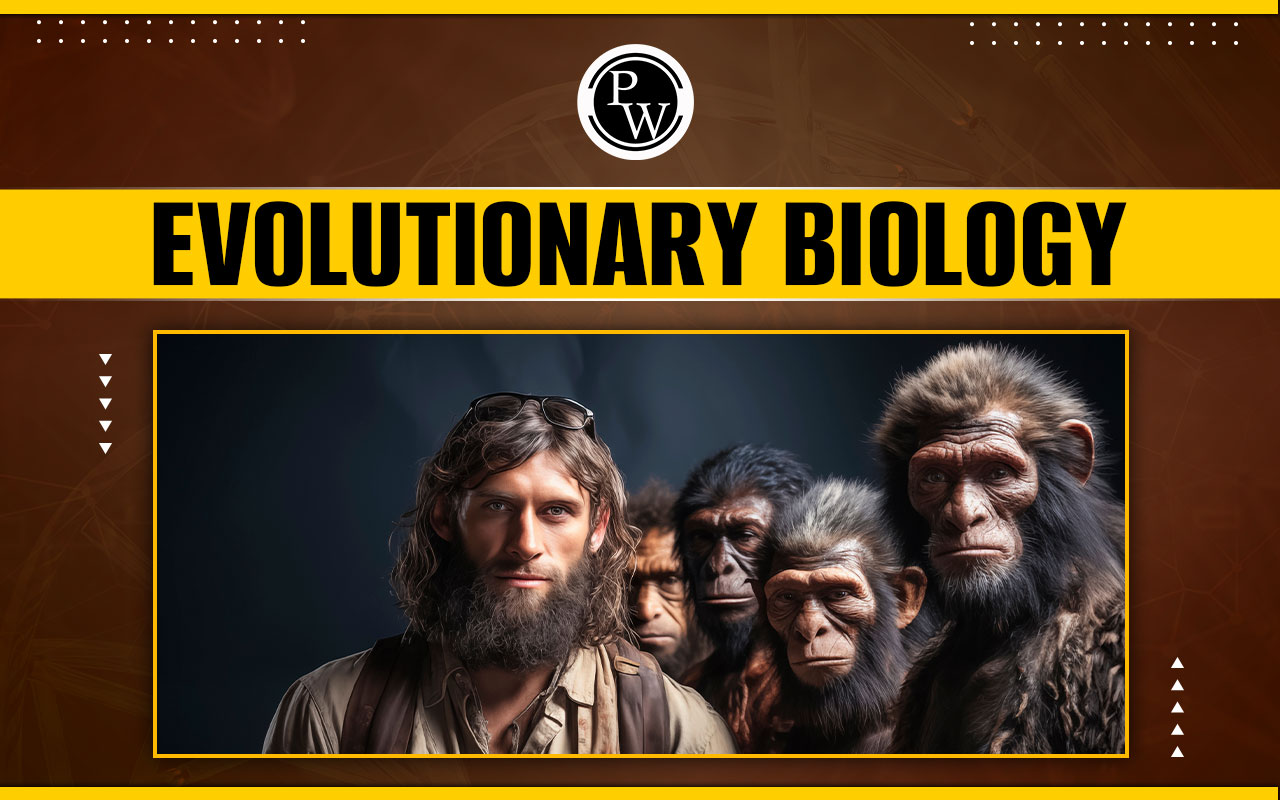

Evolutionary Biology: Have you ever wondered why some animals have stripes or spots while others have no markings? Or why do humans have opposable thumbs while other primates do not? These are just some of the questions that Evolutionary Biology seeks to answer.
By studying evolution and how it has shaped the diversity of life on our planet, we can begin to unravel the mysteries of how and why organisms have changed over time. This article will discuss the fascinating world of Evolutionary Biology and discover the fantastic stories of how life has evolved!Introduction
There are differences in the qualities, characteristics, behavioural patterns, and personalities of the many species of the planet as they evolve and adapt to their circumstances. The species adapts to the changes while making the necessary adjustments to ensure their existence. They can only survive in ecological settings, fostering evolution's expansion via several developmental stages. Our forefathers left us with changes in how we live and adjust to our habitats. This article goes into greater detail and offers a thorough insight. As a result of the ongoing process of evolution, certain traits eventually start to appear more frequently or less frequently in the individuals of a given species. The generations that follow will experience significant differences due to these changes. This phenomenon is called evolution. The evolution of natural selection is responsible for the differences in the traits and attributes of species (individuals and organisms) through many generations. The principle of evolutionary biology is that all organisms undergo gradual change throughout time.Evolutionary Biology
Evolutionary biology is the study of how organisms change and diversify over time through the process of evolution. It involves understanding the mechanisms of evolution, such as natural selection, genetic drift, and gene flow, and how these processes shape the diversity of life on Earth. Evolutionary biologists study various topics, including the origin of species, the evolution of complex traits and behaviours, the relationships between organisms, and the history of life on Earth. They use various tools and methods, such as genetics, genomics, phylogenetics, comparative anatomy and physiology, and fieldwork. One of the critical insights of evolutionary biology is that all living organisms share a common ancestry and have evolved over millions of years through a process of descent with modification. By studying the patterns of similarities and differences among organisms, evolutionary biologists can reconstruct the evolutionary history of life on Earth and gain insights into the mechanisms that drive the evolution of new traits and species.Methods of Biological Evolution
There are several processes and tools of biological evolution, including:-
Natural selection
-
Genetic drift
-
Gene flow
-
Mutation
-
Sexual selection
Related Links -
Types of Biological Evolution
Biological evolution can be broadly classified into the following types:-
Microevolution:
-
Macroevolution:
-
Divergent evolution:
Environmental Issues and Solutions
-
Convergent evolution:
-
Coevolution:
-
Adaptive radiation:
Related Links -
Evolutionary Biology <span style=
Q1: What is Evolutionary Biology?
Answer: Evolutionary Biology studies how living organisms have changed and how new species have arisen from earlier ones.
Q2: What is natural selection?
Answer: Natural selection is the process by which certain traits become more or less common in a population over time, depending on how well they help organisms survive and reproduce.
Q3: What is adaptation?
Answer: An organism's ability to adapt to its environment aids in its ability to survive and reproduce.
Q4: What is speciation?
Answer: Speciation is the process by which new species arise from existing ones, usually due to a lack of interbreeding between populations over time.
Q5: What is genetic variation?
Answer: Genetic variation refers to the differences in DNA sequences among individuals of the same species, which can lead to differences in physical traits and behaviours.
Q6: What is a fossil?
Answer: A fossil is preserved remains or traces of an organism that lived in the past, often found in rocks or sedimentary layers.
Q7: What is the theory of evolution?
Answer: The theory of evolution is the scientific explanation for how and why living organisms have changed over time, based on the principles of natural selection, genetic variation, and other factors.
🔥 Trending Blogs
Talk to a counsellorHave doubts? Our support team will be happy to assist you!

Check out these Related Articles
Free Learning Resources
PW Books
Notes (Class 10-12)
PW Study Materials
Notes (Class 6-9)
Ncert Solutions
Govt Exams
Class 6th to 12th Online Courses
Govt Job Exams Courses
UPSC Coaching
Defence Exam Coaching
Gate Exam Coaching
Other Exams
Know about Physics Wallah
Physics Wallah is an Indian edtech platform that provides accessible & comprehensive learning experiences to students from Class 6th to postgraduate level. We also provide extensive NCERT solutions, sample paper, NEET, JEE Mains, BITSAT previous year papers & more such resources to students. Physics Wallah also caters to over 3.5 million registered students and over 78 lakh+ Youtube subscribers with 4.8 rating on its app.
We Stand Out because
We provide students with intensive courses with India’s qualified & experienced faculties & mentors. PW strives to make the learning experience comprehensive and accessible for students of all sections of society. We believe in empowering every single student who couldn't dream of a good career in engineering and medical field earlier.
Our Key Focus Areas
Physics Wallah's main focus is to make the learning experience as economical as possible for all students. With our affordable courses like Lakshya, Udaan and Arjuna and many others, we have been able to provide a platform for lakhs of aspirants. From providing Chemistry, Maths, Physics formula to giving e-books of eminent authors like RD Sharma, RS Aggarwal and Lakhmir Singh, PW focuses on every single student's need for preparation.
What Makes Us Different
Physics Wallah strives to develop a comprehensive pedagogical structure for students, where they get a state-of-the-art learning experience with study material and resources. Apart from catering students preparing for JEE Mains and NEET, PW also provides study material for each state board like Uttar Pradesh, Bihar, and others
Copyright © 2025 Physicswallah Limited All rights reserved.
Get App











